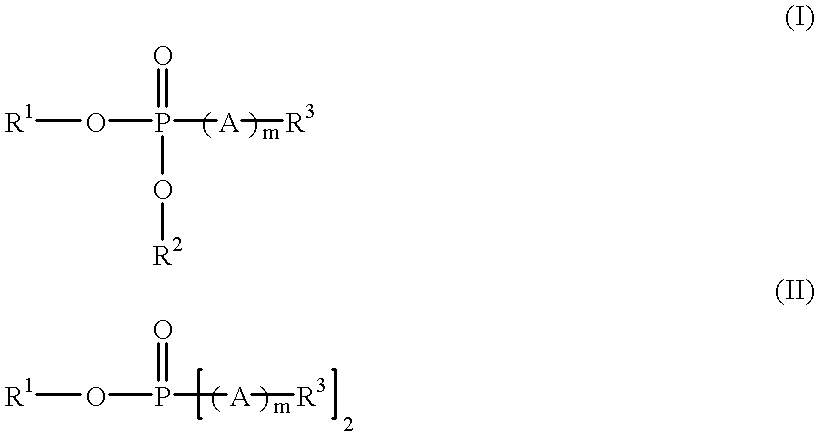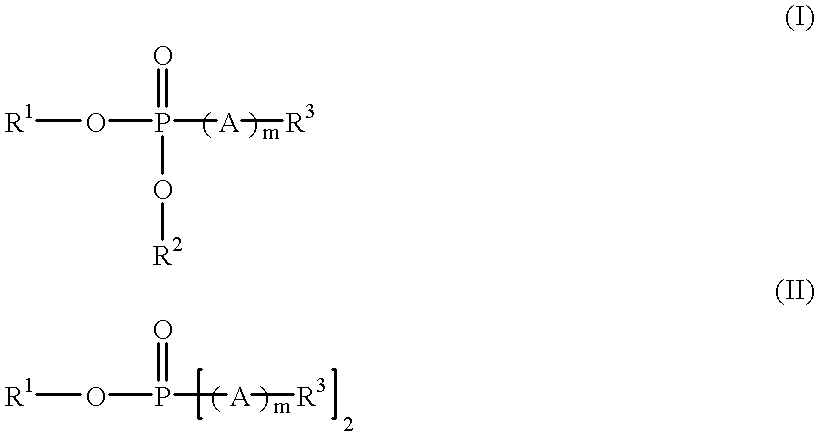Toner coagulant processes
a technology of coagulant and toner, applied in the field of xerographic systems, can solve the problems of substantial paper curling, adversely affecting the charging behavior of toners, and the charge level may be too low for proper toner developmen
- Summary
- Abstract
- Description
- Claims
- Application Information
AI Technical Summary
Benefits of technology
Problems solved by technology
Method used
Image
Examples
example ii
Magenta Toner (Latex A)
A magenta toner was prepared by mixing 310 grams of the above prepared latex emulsion A and 200 grams of an aqueous magenta pigment dispersion containing 43 grams of magenta pigment PR 81.3 having a solids loading of 21 percent, and 48 grams of the wax dispersion P725 wax having a solids loading of 30 weight percent and simultaneously adding 600 milliliters of water with high shear at speeds of 3500 rpm by means of a polytron. To this mixture were added a 20.3 grams of polyaluminum sulfosilicate (PASS) solution containing 3.5 grams of 10 percent solids, 90 percent water, and 16.8 grams of 0.2 molar nitric acid, over a period of 1 minute, and blended at speed of 5,000 rpm for a period of 2 minutes. The resulting mixture was transferred to a 2 liter reaction vessel and heated at a temperature of 50.degree. C. for 135 minutes resulting in aggregates of a size of 5.4 microns and a GSD of 1.19. To this toner aggregate were added 80 grams of latex A, followed by sti...
example iv
Aggregation of Cyan Toner (Latex B)
310 Grams of the above prepared latex emulsion B and 197 grams of an aqueous cyan pigment dispersion containing 16 grams of cyan pigment 15.3 having a solids loading of 53.4 percent (47.6 percent water), and 48 grams of wax dispersion of P725 wax having a solids loading of 30 weight percent, were simultaneously added to 600 milliliters of water with high shear stirring by means of a polytron. To this mixture were added 20 grams of a polyaluminum sulfosilicate (PASS) solution containing 3.3 grams of 10 percent solids and 16.8 grams of 0.2 molar nitric acid, over a period of 1 minute, and blended at speed of 5,000 rpm for a period of 2 minutes. The resulting mixture was transferred to a 2 liter reaction vessel and heated at a temperature of 50.degree. C. for 125 minutes resulting in aggregates of a size of 5 microns and a GSD of 1.19. To this toner aggregate were added 100 grams of latex A and followed by stirring for an additional 30 minutes and the...
example v
Magenta Toner (R 81.3)--Latex C
310.0 Grams of the above prepared latex emulsion C and 200 grams of an aqueous magenta pigment dispersion containing 34.4 grams of magenta pigment R 81.3 having a solids loading of 36.4 percent and the remainder being water throughout were simultaneously added to 600 milliliters of water with high shear stirring by means of a polytron. To this mixture were added 11.25 grams of polyaluminum sulfosilicate (PASS) solution containing 1.25 grams of 10 percent solids and 10 grams of 0.2 molar nitric acid, over a period of 1 minute, followed by the addition of 11.25 grams of a cationic surfactant solution containing 1.25 grams of the coagulant SANIZOL B.TM. (60 percent active ingredients) and 10 grams of deionized water and blended at speed of 5,000 rpm for a period of 2 minutes. The resulting mixture was transferred to a 2 liter reaction vessel and heated at a temperature of 50.degree. C. for 125 minutes resulting in aggregates of a size of 5.2 microns and a...
PUM
| Property | Measurement | Unit |
|---|---|---|
| diameter | aaaaa | aaaaa |
| temperature | aaaaa | aaaaa |
| aggregation temperature | aaaaa | aaaaa |
Abstract
Description
Claims
Application Information
 Login to View More
Login to View More - R&D
- Intellectual Property
- Life Sciences
- Materials
- Tech Scout
- Unparalleled Data Quality
- Higher Quality Content
- 60% Fewer Hallucinations
Browse by: Latest US Patents, China's latest patents, Technical Efficacy Thesaurus, Application Domain, Technology Topic, Popular Technical Reports.
© 2025 PatSnap. All rights reserved.Legal|Privacy policy|Modern Slavery Act Transparency Statement|Sitemap|About US| Contact US: help@patsnap.com



